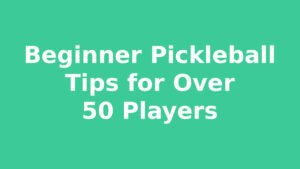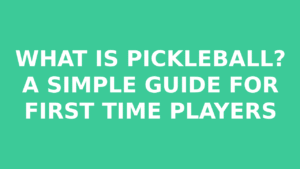Pickleball is one of the fastest-growing sports in the world — and for good reason. It’s a blend of tennis, badminton, and ping pong, but with its own unique personality. If you’re new to the game, you might be searching for Pickleball Rules Explained for First-Timers so you can hit the court feeling confident. This guide walks you through every essential rule in plain, friendly language so you can skip the confusion and get straight to the fun.
1. The Court and Gear: Your Playing Stage
A pickleball court is 20 feet wide and 44 feet long — about the same size as a badminton court. There’s a net in the middle, standing 36 inches tall at the edges and slightly lower (34 inches) in the center.
The ball is a lightweight, perforated plastic sphere — kind of like a wiffle ball — and you’ll hit it with a solid paddle made of wood or composite material. Unlike tennis racquets, pickleball paddles have no strings, which gives the game its distinct pop sound.
2. Serving: How the Game Begins
Serving in pickleball is always underhand. This means you swing the paddle upward from below your waist, and the ball has to be hit in the air (no bouncing it first).
Key serving rules:
-
One Foot Behind the Line: At least one foot must stay behind the baseline until you make contact with the ball.
-
Diagonal Target: You serve to the service box directly diagonal from you.
-
One Shot at It: You only get one serve attempt. If you miss, it’s the other team’s turn — unless the ball clips the net and still lands in the correct box, called a let serve, in which case you re-serve.
Pro tip: Take a breath before serving. Rushed serves are the number one cause of beginner errors.
3. The Two-Bounce Rule: Pickleball’s Signature Twist
One of the most important things to remember as a new player is the two-bounce rule:
-
After the serve, the ball must bounce once before the receiver hits it back.
-
After the return, the ball must bounce once before the server’s team can hit it.
Only after these two bounces can players start volleying (hitting the ball before it bounces). This rule keeps rallies longer and prevents players from rushing the net right after serving.
4. The Non-Volley Zone (a.k.a. The Kitchen)
The non-volley zone, or “kitchen,” is a 7-foot area stretching from the net toward each baseline. You can step into the kitchen to play a ball that has already bounced, but you cannot volley from inside this zone — even if you lean in just a little.
Why? It prevents “smash” plays right at the net and keeps the game balanced between power and finesse.
Watch out: If you volley from outside the kitchen but your momentum carries you into it afterward, it’s still a fault.
5. How Scoring Works
Scoring in pickleball can feel unusual at first:
-
Only the serving team can score points.
-
Games are typically played to 11 points, and you must win by at least 2.
-
Scores are called with three numbers:
-
Your team’s score
-
Opponent’s score
-
Server number (1 or 2)
Example: 6–4–2 means your team has 6 points, the other team has 4, and the second server is serving.
-
Quick tip: Always call the score before serving. It keeps everyone on the same page and prevents disputes.
6. Singles vs. Doubles
While pickleball is famous for doubles play, you can also play singles:
-
Doubles: Each player on the serving team gets a turn to serve before handing the ball over to the opponents.
-
Singles: You serve alone and switch sides of the court after every point you score.
Doubles tends to be more social and strategic, while singles is faster and more physically demanding.
7. Common Mistakes First-Timers Make
-
Stepping into the kitchen on a volley — even a toe counts.
-
Forgetting the two-bounce rule and charging the net too soon.
-
Serving into the wrong court — always aim for the diagonal box.
-
Not calling the score correctly — confusion kills momentum.
-
Hitting too hard — pickleball rewards placement over power.
8. Tips to Get Comfortable Quickly
-
Keep the ball in play — consistency wins more points than speed.
-
Communicate with your partner — call “Mine!” or “Yours!” early to avoid paddle clashes.
-
Mind your feet — foot faults are the easiest way to lose points.
-
Play relaxed — tense swings lead to unforced errors.
-
Smile — pickleball is as much about the laughs as it is about the points.
Final Word
Pickleball may have a few unusual rules, but once you learn the rhythm — serve, bounce, bounce, rally — it clicks fast. Focus on understanding the serve, the two-bounce rule, and the kitchen boundaries, and you’ll already know 90% of the game. The rest is just practice, good sportsmanship, and enjoying the community that makes pickleball so addictive. Please take advantage of our printable pickleball rules explained for first-timers infographic.





